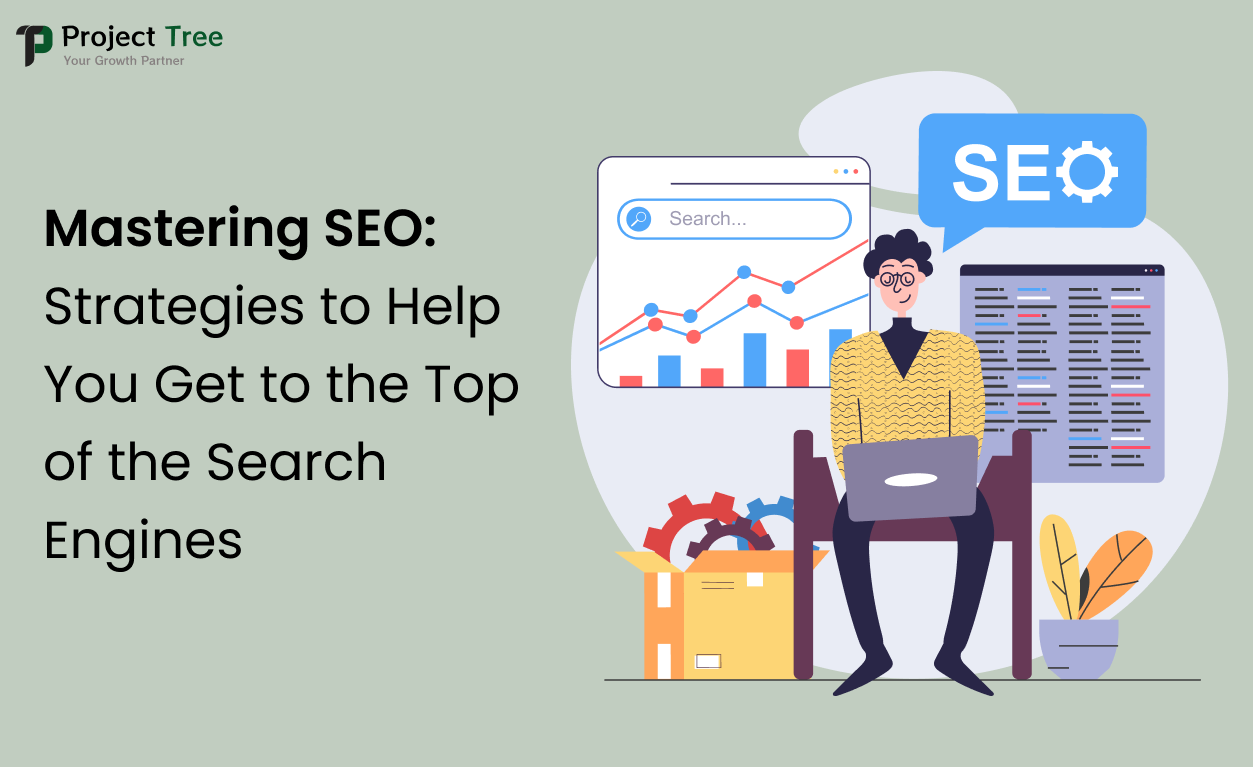Search Engine Optimization (SEO) is frequently looked at as the cornerstone of the company’s digital marketing efforts. It helps improve the recognition of a site in specific search engines; as consequence, it advances organic traffic. It is thus important for companies and people producing content to manage and optimize SEO so that their content stands out among the millions of others. This guide comprises heuristic strategies and approaches that can enhance your search engine rankings.
1. Understanding SEO Basics
It is necessary to understand some of the fundamental concepts before moving on to learn more complex methods. SEO is the process of configuring several aspects of your site so that Google and other search engines can locate and better index your site.
Search Engines also have algorithms to decide which pages to present before users based on the specified search query. Some of these algorithms use factors such as keywords, quality and usefulness of the content and the experience of the user.
2. Keyword Research
Keyword research is the core of any SEO work. Keywords are the web terms, meaning the words that are entered by users into search engines. Proper identification of the keywords to be used enables the production of content that relates closely to what people are looking for.
Tools for Keyword Research:
Google Keyword Planner:
This tool offers information on the number of searches and competition with the term.
SEMrush:
Provides specific data on specified keywords and about rivals.
Ahrefs:
Being popular for the services of keyword databases and SEO.
When selecting keywords, consider:
Search Volume:
High SV means the keywords are popular but it will also mean a high level of competition.
Keyword Difficulty: Indicates how competitive or difficult it is to get to the top of search results for the selected keyword.
Relevance:
Make sure that the keywords match your posts and the people who frequent your blog.
Long-Tail Keywords: These are longer phrases that cause less competition as they are longer and usually very specific. For instance, rather than adopting keywords like “SEO,” one may adopt “SEO tips for businesses that are small.
3. On-page SEO:
Also known as on-site optimization, on-page SEO is the process that deals with the changes that can be made on the website to affect the rankings. Key components include:
Title Tags:
The title tag shows on the browser’s title bar and search results; it should display the main keyword. It should indeed be kept short, at best between 50 and 60 characters.”
Meta Descriptions:
This is the abstract of what has been written on the given page. Although it does not have any relation to rankings, a unique and interesting meta description can always lead to higher CTR. Aim for 150–160 characters.
Headings:
Make the headings meaningful; use the heading tags, such as H1, H2, H3, etc. It is recommended to have the H1 tag contain your primary keyword and briefly explain the contents of the page. Using subheadings (H2, H3) allows the text to be divided into smaller parts, making it easier to read.
URL Structure:
When it comes to URLs, they should be brief and contain appropriate descriptors with the inclusion of key words. For instance, write “/seo-tips” instead of “/post1234. ”
Internal Linking:
This is important as it will help the search engine crawl through the various sections of your website and also keep the visitors on the website fruitful links to other pages on your site.
Image Optimization:
This should also apply to the identities, which should have easily recognizable file names and alt text descriptions. This is beneficial for digital marketing services in order to know what the pictures consist of, and it has the added advantage of exposing the website in the picture section of the search engine.
4. Content Quality
In SEO, one type of content that is very significant is quality content. The search engines prefer sites that create value for the users. To create valuable content:
Relevance:
Make sure that your content is relevant to your target audience’s needs or engages in what they love to do online.
Depth:
Long and relevant content which encompasses all the information regarding a specific topic preferred by search engines. Using long form when suitable is still good but the content should not be overly lengthy.
Originality:
Avoid duplicate content. Content which is designed to be exclusive and new will always be favored by the search engines.
Readability:
Said rather academically, content must be clear, which is a fancy way of saying one should be able to grasp what is being written without much effort. Select fonts that are easy on the eyes, together with appropriate white space, concise writing with the help of bullet points and brief, easily understandable paragraphs.

5. Technical SEO
Technical:
SEO is the optimization of the features of the website that cannot be seen or changed by the average user, with regard to their availability to the search engine.
Site Speed:
Works cited Page loading has impact on users and ranking. Sites such as Google PageSpeed can be used to determine potential enhancements to the website. It should be under 3 seconds because slow loading times turns off visitors and harms SEO.
Mobile-Friendliness:
Web traffic comes from mobile devices; make sure your site is mobile-friendly and loads quickly on all types of devices. To evaluate this, the organization should use Google’s Mobile-Friendly Test.
XML Sitemaps:
An XML sitemap is for informing the search engines about your pages so that they can be easily indexed. The sitemap should therefore be submitted to the Google Search Console and the Bing Webmaster Tools.
Robots. txt:
This file informs the search engines on which page they should crawl and which one they should not. See that they are well configured so that one does not end up with ineffective or redundant content being listed on Google.
Secure Sockets Layer (SSL):
Search engines use HTTPS as one of their ranking signals. Make sure that your site does use SSL so as to code and protect the details of users.
6. Backlinks
Backlinks are also referred to as inbound links and these are links from other websites linking to your website. It remains a major factor because it reveals the reputation and bona fide nature of your website.
Quality Over Quantity:
With a view to ensuring effective link building, it is important to concentrate on the quality of the link, more precisely on the authoritative links that are available in your specific industry. Quang.Mapping: Quality links are preferable to the number of links of low quality.
Guest Blogging:
To attain link backs from other web sites, write articles that can be placed on other web sites. This can help create a community and give your site more ‘credibility.’
Broken Link Building:
It is always useful to look for errors, such as broken links, on other sites and offer to post your content instead. This is beneficial for the owner of the website, and for you, it will be an opportunity to receive a backlink.
Content Promotion:
You have to use the backlinks naturally; therefore, you have to share your content on social platforms, related forums, and other related discussion forums.
7. User Experience (UX)
Usability is an element that influences the ranking in the search results. The positive UX boosts the visit duration and the rate of visitors who do not leave your website, which in turn influences your ranking.
Navigation:
Make sure your site is easy to get around and people are able to find what they are looking for. High-quality menus and clean CTAs support the user, giving a hint as to where what they are looking for can be found.
Design:
An appropriate and polished layout inspires confidence in visitors, and great design keeps visitors’ engagement high.
Engagement Metrics:
Regarding the content’s relevancy, there are quantitative measures you can use, like the average session duration as well as the pages per session. Some of the tools that can be used in monitoring these metrics include Google Analytics among others and always seek to improve on them.
8. Local SEO
Local SEO is important if organizations are focusing more on local customers. Internet-store enhances the site’s visibility with local searches.
Google My Business:
Make sure that you have properly claimed and that you are properly optimizing your Google My Business listing. Aside from the relevant micro-details guaranteeing that the conformity of your business name, address, and phone number (NAP) is flawless,.
Local Keywords:
It is important that you use keywords that depict the geographical location. For instance, instead of the user typing ‘plumber’, the recommendation is ‘plumber in Denver’.
Local Citations:
Register your business with the local directories and review sites. There is thus a need to ensure that there is compile information on NAP from these sites.
Customer Reviews:
Make a questionnaire available to clients to fill when they are satisfied and give positive feedback. Reviews matter as they impact local searches and customers’ perceptions of a business.
9. Analytics and Monitoring
It is equally important for you to know what is going on in your SEO and where you are succeeding or falling short.
Google Analytics:
Analyze website visits, users, and counter-conversions. To discover the comparative effectiveness of these pages, please use this set of data to differentiate between the site’s high-performing and low-performing pages.
Google Search Console:
Enables the identification of the previous performance of a particular search, the current indexing state, and possible problems. One of the things that should be done on a regular basis is crawl errors and sitemap submissions.
Rank Tracking Tools:
The situation where you previously occupied, for example, the tenth place for queries and now have only the twenty-fifth can indicate the effectiveness of your work and help measure the effectiveness of your work with the help of services like SEMrush or Ahrefs.
10. Staying Updated
This is specifically true for SEO since it is a discipline that is still in the process of evolution as it searches for new means of making organizations appeal to their target audiences. It bears mentioning that the rules as well as the algorithms of the search engines change over time; therefore, being up-to-date is crucial.
Industry Blogs:
To get the latest information, one can read SEO blogs such as Moz, Search Engine Land, and Neil Patel.
SEO Forums:
You need to participate in the relevant forums, such as Reddit and WebmasterWorld, to share your information and learn from others.
Webinars and conferences
Get to know more by attending more webinars related to SEO or conferences to stay updated and establish connections with some of the workers in the said field.
Conclusion
Optimization of any website for the various search engines requires an understanding of several elements, which entail the technicalities of this field, time for planning, and constant changes. By performing keyword research, on-page and technical SEO, high-quality content and user experience, and localized SEO, there is the opportunity to increase the position in searches and the organic traffic on the site. Continuous evaluation of the results and awareness of changes that occur in the sphere will assist in maintaining and improving the SEO activity.
Learn how Project Tree supports the development of DrPro, a comprehensive platform for modern healthcare management.

